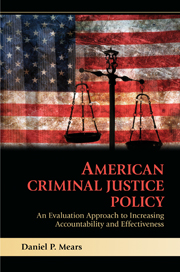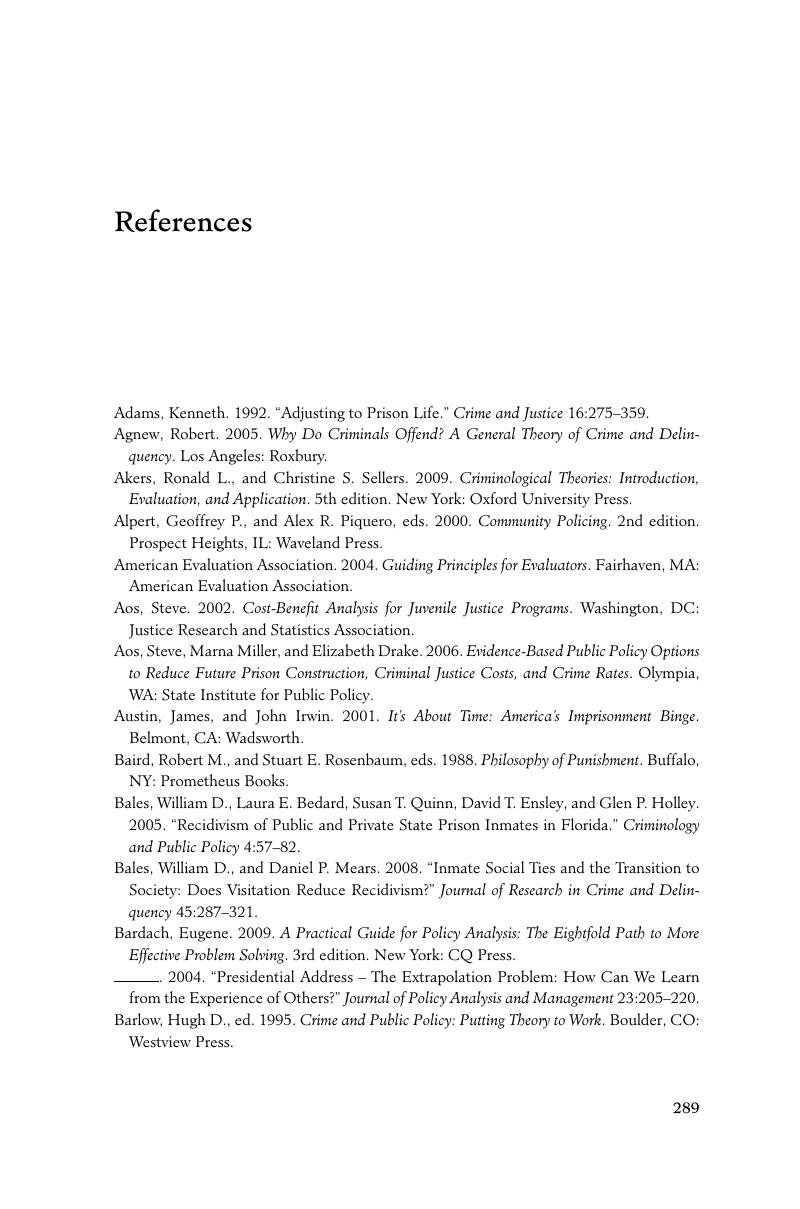 American Criminal Justice Policy
American Criminal Justice Policy Book contents
- Frontmatter
- Contents
- Preface
- 1 Introduction
- 2 Irrational Criminal Justice Policy
- 3 A Solution for Improving Criminal Justice Policy
- 4 Needs Evaluations
- 5 Theory Evaluations
- 6 Implementation Evaluations
- 7 Outcome Evaluations and Impact Evaluations
- 8 Cost-Efficiency Evaluations
- 9 Conclusion
- Notes
- References
- Index
- References
References
Published online by Cambridge University Press: 05 June 2012
- Frontmatter
- Contents
- Preface
- 1 Introduction
- 2 Irrational Criminal Justice Policy
- 3 A Solution for Improving Criminal Justice Policy
- 4 Needs Evaluations
- 5 Theory Evaluations
- 6 Implementation Evaluations
- 7 Outcome Evaluations and Impact Evaluations
- 8 Cost-Efficiency Evaluations
- 9 Conclusion
- Notes
- References
- Index
- References
Summary

- Type
- Chapter
- Information
- American Criminal Justice PolicyAn Evaluation Approach to Increasing Accountability and Effectiveness, pp. 289 - 318Publisher: Cambridge University PressPrint publication year: 2010


